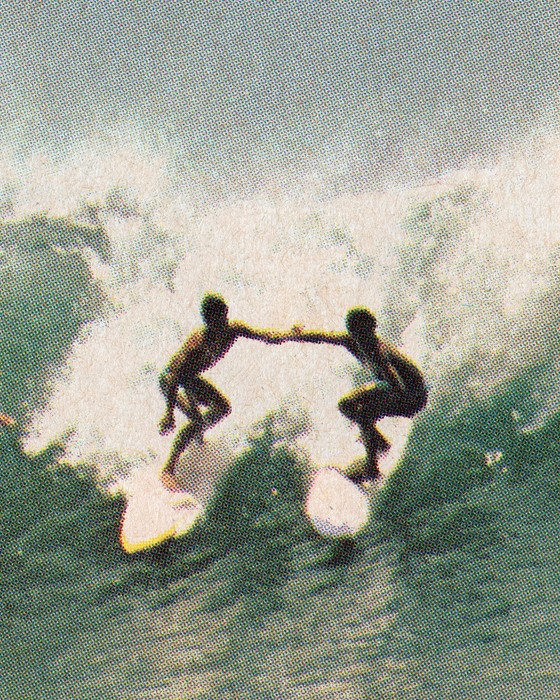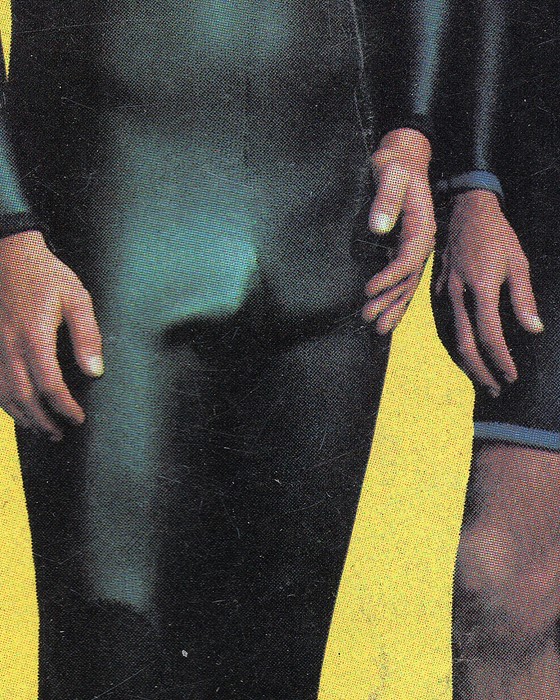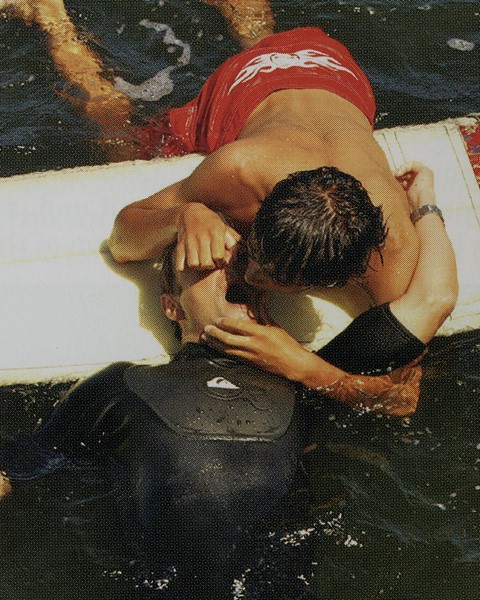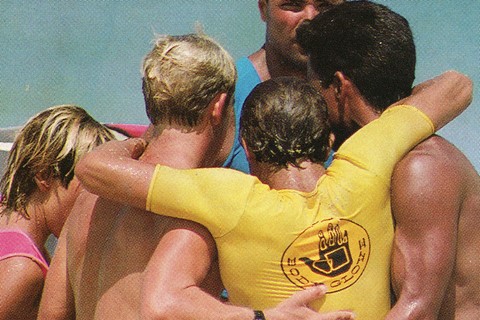In his new book A Spiritual Good Time, Stephen Milner reimagines surf culture through a queer lens
Surfing is among things that dreams are made of: who wouldn’t want to ride a wave in crystalline, turquoise waters, under the warm sun of Tavarua, Uluwatu or Tamarindo? However, surf aesthetics – and, by extension, surf culture – can be an exclusive sport. Imagining a surfer almost invariably means mentally picturing a white, blonde conventionally attractive and heterosexual man. For decades, surf magazines have perpetuated that ideal, disseminating imagery that featuring scantily clad – yet unequivocally straight – men spending their days together, riding surfboards with names like “Penetrator”, chugging beers and checking out faceless, almost entirely nude women.
Like most young surfers, Stephen Milner grew up fascinated by those images, yet simultaneously feeling alienated by them. A San Diego-based artist and surfer, Milner was interested in pro skimboarding before getting serious about surfing. “I remember being so impressed by the men in the community, and at the same time thinking how freeing it was to spend time at the beach, where I could hide my male-on-male gaze behind sunglasses, and use surfing as a sort of masculinity cloak.” As a teenager, he collected surf and skateboard magazines, but hid gay porn between their pages. “It was the one place where I knew no one would look,” he says. “I knew I was gay but I wasn’t out yet. It’s funny because in a way I was using surfing to be more straight-acting, but surfing was also this kind of queer dream, where you’d meet a guy in the water, and you’d be the only two people out, striking a conversation and surfing against the setting sun … ” For years, Milner inwardly reflected on what it means to be gay in the surfing world, yet never knew how to articulate those thoughts. Until a few years ago, when he started creating collages mixing pictures from vintage surfing magazines and gay porn magazines, thus queering a historically straight narrative.
His images have now been turned into A Spiritual Good Time, a book uncovering the dialogue between surfing communities and queer culture, and exploring gay identity through tight cropping, editing and re-contextualising the editorial tropes of surf photography. A few weeks before the book’s publication, Milner tells us the story behind his artwork and reflects on surfing tradition, inclusion and his own experience within the community.
“I grew up in New York, near Long Island Sound, a 30-minute drive away from the ocean, so I started skimboarding and messing around with surfing as a kid, but I wasn’t serious about it until I went to college. At around 19 I got my first longboard. At the time, I was an undergrad in art school and started toying with the idea of becoming a surf photographer, but I soon realised it wasn’t for me: I just couldn’t relate to the kind of surfing community you see in magazines, with its male on female gaze, its hypermasculinity, its sense of brotherhood … Somehow, I had always been a part of that yet I never felt like my true self. Deep down, I was hoping one day I’d find a group of gay surfers to be buddies and travel with, my kind of community.

“It was around that time that I came out to my friends. I’m straight-passing so I've been lucky to never be scared in the line-up, but I never felt comfortable with being outspoken when, for instance, I heard homophobic slurs in the line-up, because I didn’t want to be outed in the water and become a target. People often don’t understand that surfing can have this toxic quality: the localism, the masochism … Deep down, I think it stems from wanting to protect a tradition, whether it’s a territory, an identity, a view of masculinity … But that masculinity is so fragile! In a way, that fascinates me.
“I had an epiphany while watching Bruce Brown’s The Endless Summer, which is the ultimate surf movie, filmed in 1965, about two surfers searching for the perfect wave. I remember thinking those two guys should definitely be gay, travelling and surfing together, just pretending they’re interested in women. It was so easy to turn the narrative on its head, to just take out the part where they go to Australia and the whole theme is obsessing over girls. I started thinking about that, wondering how I could flip the narrative with things that already exist, things that were declared tradition through surfing images. I started visiting surf shops and asking for vintage magazines. Looking at them, the [lack of] diversity became pretty clear. There were some recurring tropes, like the guy in a group on the beach, talking. I sliced all those little pieces, blowing them up to obtain that nostalgia quality, and once I lined up a bunch of those together, a queer narrative started forming. At the same time, I was collecting gay porn for a different project. Funnily enough, there are some images of surfers in those mags too, and I began mixing both.

“My artwork was never primarily meant for a surf audience, but for an art audience. However, Surfer Magazine took an interest in the book and published an interview a couple weeks ago. The amount of attention and hate mail I got was insane; I ended up having to turn my phone off for a couple of days. But I also had a lot of loving responses and amazing community building, especially from queer, women and non-white surfers. Basically, the people who don’t fit the stereotype of what the world thinks a surfer should be like and look like. It’s time to flip that narrative, for good.”
A Spiritual Good Time is published by Meteoro Editions.






